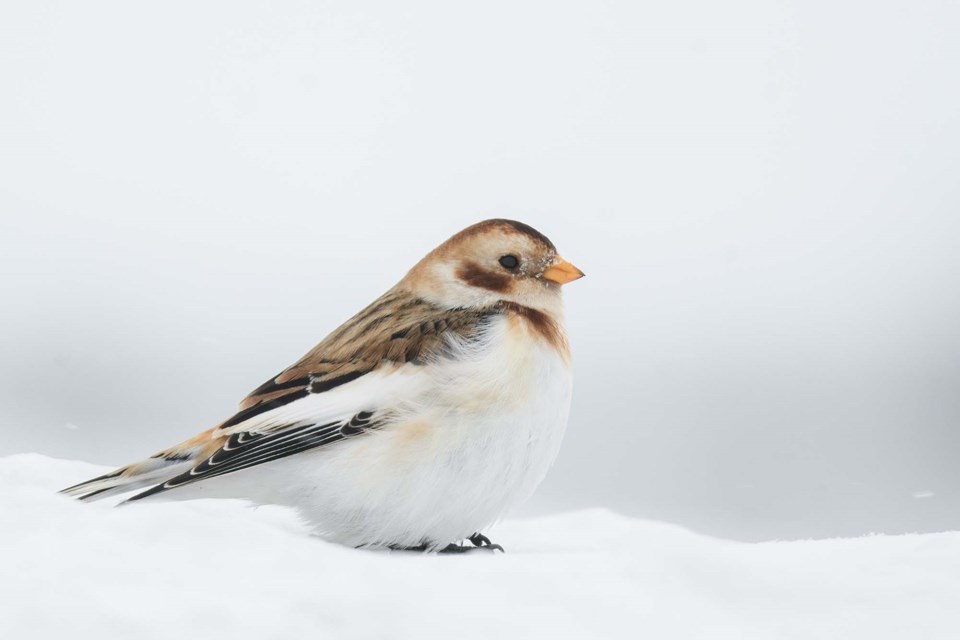An Alberta bird observatory hopes St. Albert birdwatchers can help her team track down an elusive winter bird that looks like a toasted marshmallow.
The Beaverhill Bird Observatory put out a call Dec. 12 for Edmonton-area residents to help them study snow buntings.
Snow buntings are small, chunky, ground-dwelling birds with white bodies, black outer wings, and a short, conical beak, reports the Cornell Lab of Ornithology. Some 490 were spotted in the 2022 St. Albert Christmas Bird Count.
“They look like a toasted marshmallow,” said Jana Teefy, the Beaverhill Bird Observatory biologist heading up the centre’s snow bunting research.
Snow buntings are built for winter, naturalist Nate Swick writes, equipped with a beak-to-ankle parka of dense white feathers and the ability to bury themselves in snow for warmth. The Cornell Lab reports that snow buntings breed in Canada’s Far North, cleaning their feathers in the snow come spring and wearing away the brown tips, turning them white. Mating involves dramatic battles where rivals grapple with beak and claws in midair as they tumble to the ground. In winter, the birds head south to places like Alberta.
Teefy said biologists want to study the snow bunting as research suggests their numbers have fallen dramatically in recent decades. (A 2016 Partners in Flight study estimated a 38 per cent drop since the 1970s.) While the Canadian Snow Bunting Network has studied them extensively in eastern Canada, very little is known about them out west.
But to study these birds, researchers need to find and trap them — a challenge, since snow buntings are extremely nomadic, Teefy said. They also tend to ignore traps, because if they’re in an area, there’s typically lots of food there to distract them from a trap’s bait.
Teefy said the observatory hopes Edmonton-area residents will help them find popular hangouts for snow buntings so they can try to catch the birds. Once caught, the birds will be weighed, measured, and banded to track population trends and movements.
St. Albert bird watcher Percy Zalasky said snow buntings tend to show up in around Manawan Lake and in stubble-covered fields throughout Sturgeon County.
“They’re usually active in the most ugly weather,” he continued, and can often be seen by roadways during blizzards.
Snow buntings are usually spotted in mobs of hundreds that take off in a jumble of feathers, Zalasky said. About 100 of them were on Big Lake earlier this fall.
“They usually just appear,” Zalasky said, and it’s very hard to predict where they’ll show up next.
Teefy said the observatory hopes to find and trap snow buntings between now and April, which is when the birds head north to breed. Research results will be shared with the Canadian Snow Bunting Network.
Anyone who has snow buntings on their property and is willing to let researchers trap them there should email Teefy at [email protected].




